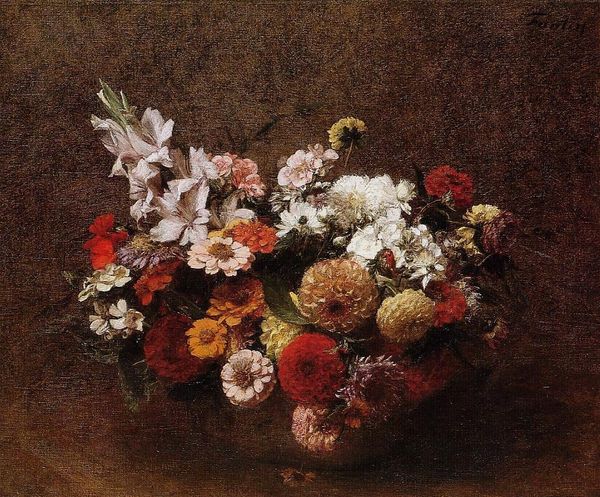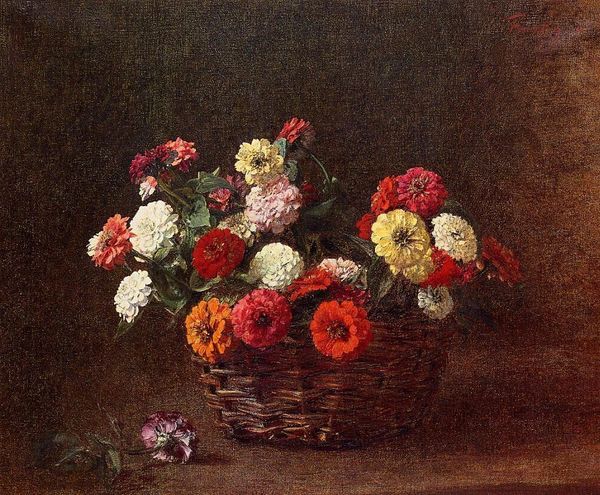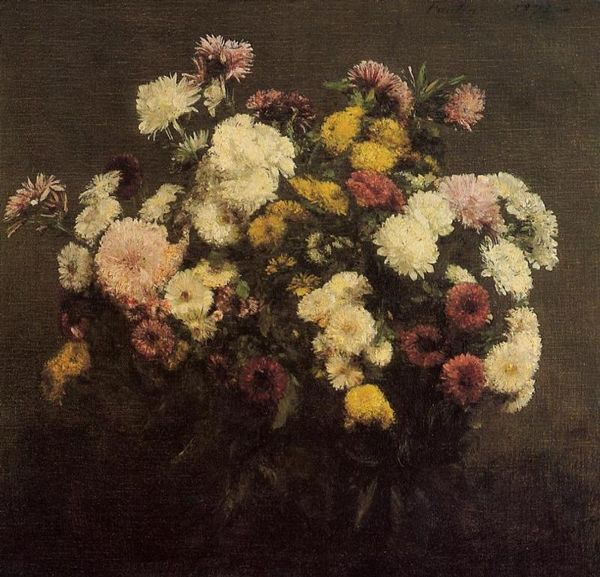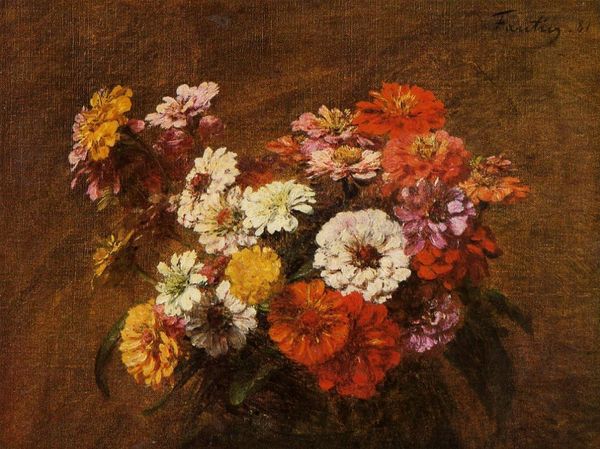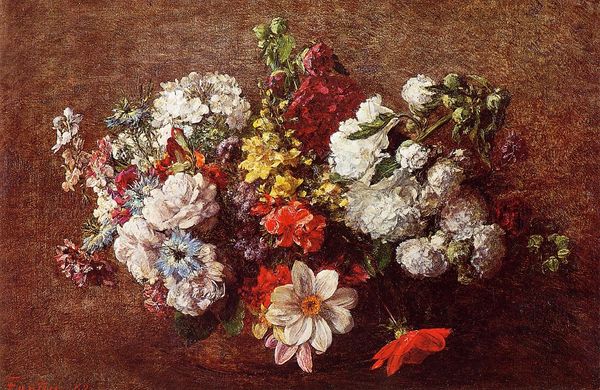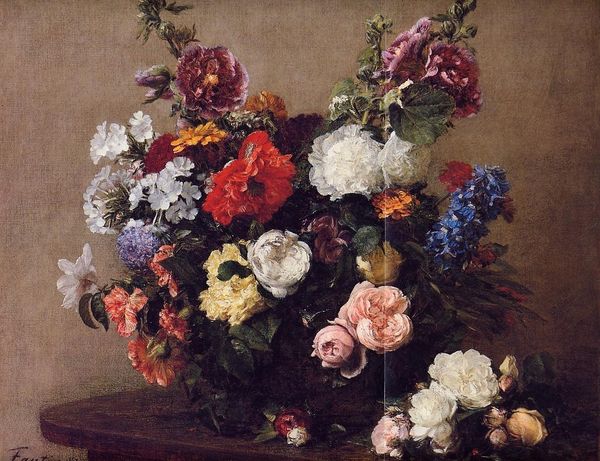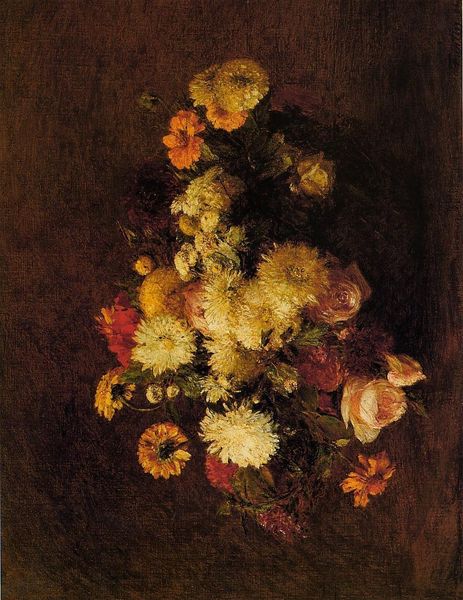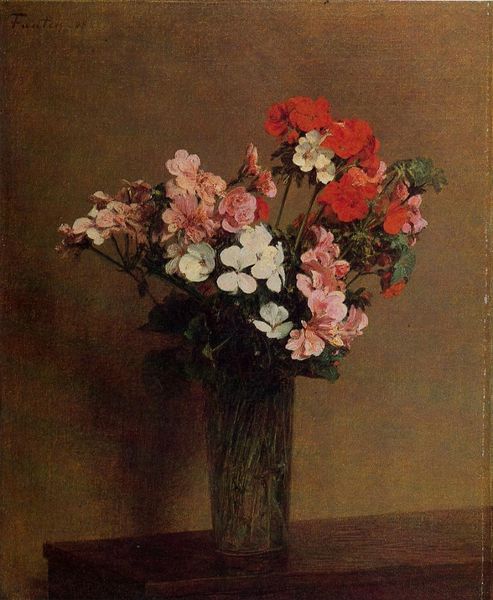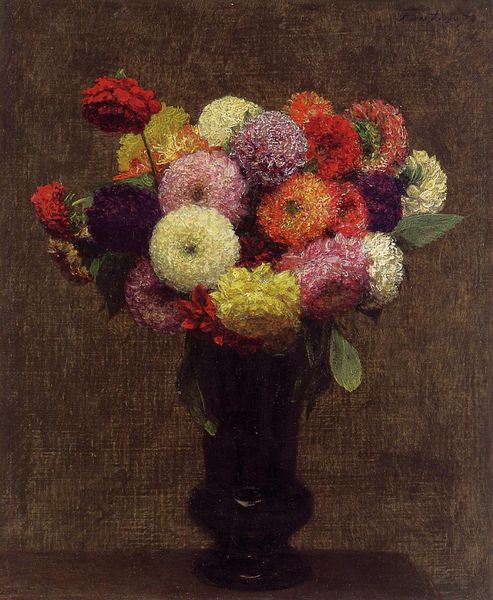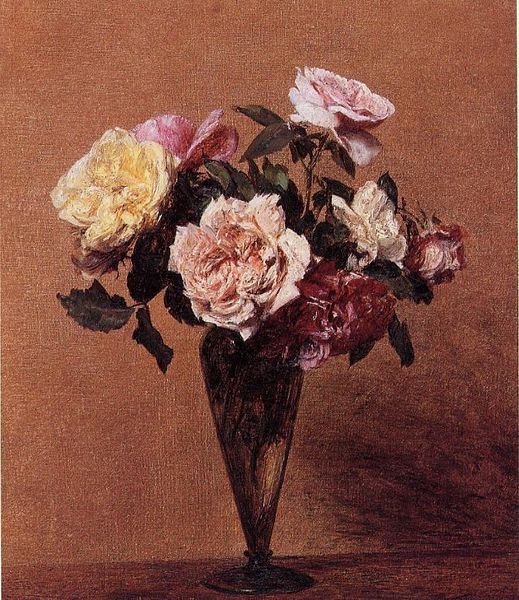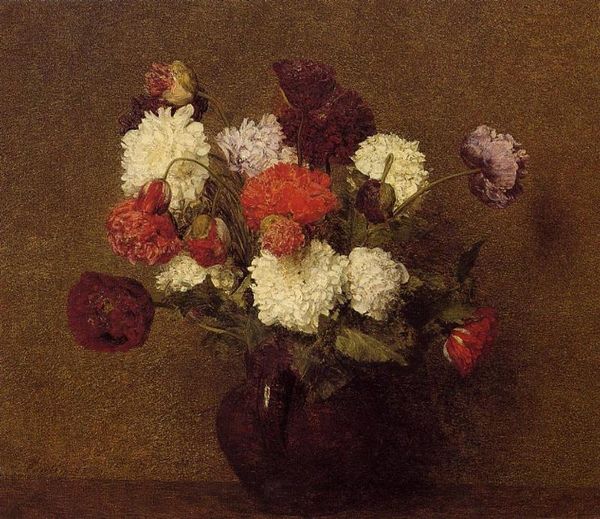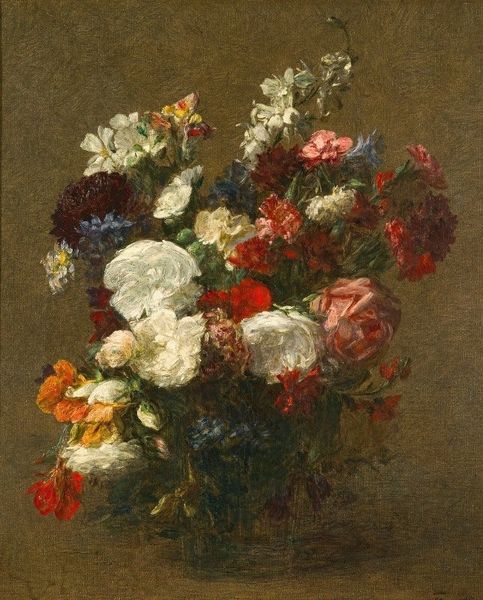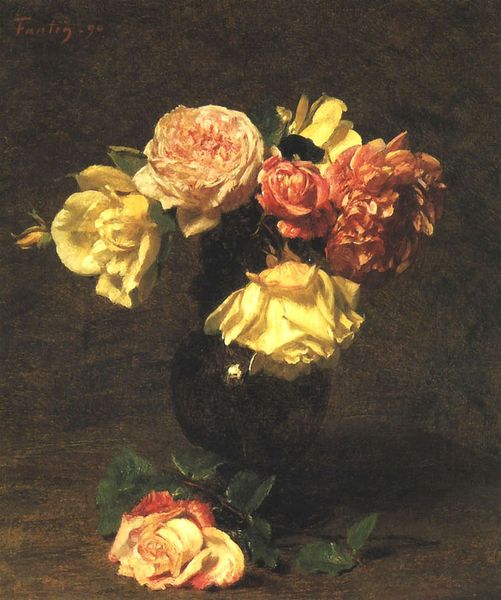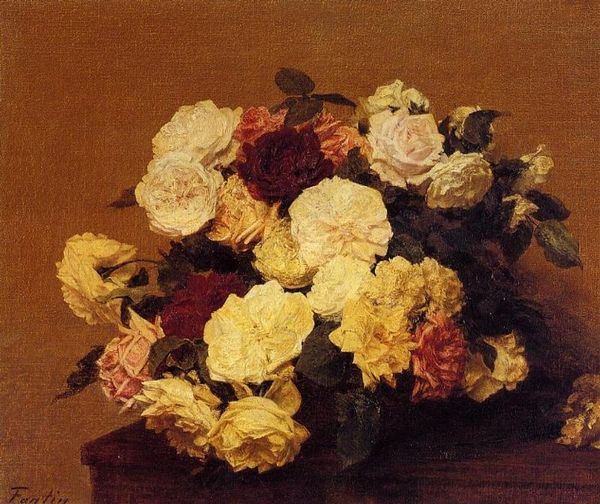
Copyright: Public domain
Curator: This is Henri Fantin-Latour's "Still Life with Flowers," created in 1881, and currently residing here at the Art Institute of Chicago. Editor: My first impression is one of faded elegance. The colours are rich but muted, like a memory of a more vibrant scene. You can almost smell the heavy perfume of those blooms. Curator: Fantin-Latour was deeply involved with the artistic circles of his time. He painted portraits of prominent figures, including fellow artists and musicians, reflecting his role in documenting the cultural landscape. Editor: It is an oil painting, and you can really see how the materiality serves a larger commentary about the Victorian era—the layers, the blending—it all speaks to a society steeped in tradition but also in a strange state of constant, feverish construction. What sort of labour goes into arranging something so studied, so elaborate? Curator: Interestingly, while his flower paintings were commercially successful, he considered his group portraits more significant, revealing a tension between artistic recognition and economic necessity. This painting comes from his popular output and was most likely made with a market in mind. Editor: That tension comes through, perhaps—a conflict between genuine artistic expression and the pressures of creating a saleable commodity. There is that darkness to it, that melancholic quality I initially felt is the reflection of the time and labor required for these still lifes. I wonder, did the labor come from him, or someone else? Curator: Artistically, Fantin-Latour found himself situated between Realism and Romanticism. This tension mirrors his personal conflicts and is very much a document of his own artistic negotiation. Editor: Ultimately, the piece leaves me thinking about value. We look at this carefully constructed "natural" scene and perhaps undervalue all of the work required to arrive at something seemingly so easy-going. The work speaks of an undercurrent of hidden labour. Curator: For me, this painting serves as an insightful commentary on the art market, where artistic merit is weighed against societal preferences. A worthwhile piece for considering the public role of art.
Comments
No comments
Be the first to comment and join the conversation on the ultimate creative platform.
